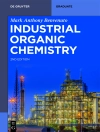Hybrid organic-inorganic perovskites (HOIPs) have attracted substantial interest due to their chemical variability, structural diversity and favorable physical properties the past decade. This materials class encompasses other important families such as formates, azides, dicyanamides, cyanides and dicyanometallates.
The book summarizes the chemical variability and structural diversity of all known hybrid organic-inorganic perovskites subclasses including halides, azides, formates, dicyanamides, cyanides and dicyanometallates. It also presents a comprehensive account of their intriguing physical properties, including photovoltaic, optoelectronic, dielectric, magnetic, ferroelectric, ferroelastic and multiferroic properties. Moreover, the current challenges and future opportunities in this exciting field are also been discussed. This timely book shows the readers a complete landscape of hybrid organic-inorganic pervoskites and associated multifuctionalities.
Mục lục
Preface ix
Acknowledgements xi
1 Introduction to Hybrid Organic–Inorganic Perovskites 1
1.1 Perovskite Oxides 1
1.2 Evolution from Perovskite Oxides to Hybrid Organic–Inorganic Perovskites 3
1.3 Classification and Chemical Variations of HOIPs 4
1.4 Structure, Symmetry, and Property Features of HOIPs 5
1.4.1 General Trend 5
1.4.2 Ion Radius Matchability and Tolerance Factor 7
1.4.3 Phase Transitions 10
References 12
2 Hybrid Halide Perovskites 15
2.1 Synthesis and Chemical Diversity 15
2.2 Symmetries and Structures 19
2.3 Phase Transitions 24
2.4 Physical Properties 29
2.4.1 Semiconductivity and Bandgap Structures 29
2.4.2 Transport Properties and Photovoltaics 32
2.4.3 Laser Physics 49
2.4.4 Light-Emitting Diodes 54
2.4.5 Photodetectors 59
2.4.6 Ferroelectricity and Rashba Effect 63
2.4.7 Mechanical Properties 66
2.4.8 Thermal Conductivity 70
2.4.9 Caloric Effects 71
2.4.10 Other Properties and Applications 73
References 73
3 Hybrid Formate Perovskites 79
3.1 Synthesis and Chemical Diversity 79
3.2 Symmetries and Structures 82
3.3 Phase Transitions and Order–Disorder 91
3.4 Physical Properties 94
3.4.1 Magnetism 94
3.4.1.1 Spin-Canting and JT Effect 94
3.4.1.2 Spin-Flop 98
3.4.1.3 Quantum Tunnelling 101
3.4.2 Dielectricity 102
3.4.3 Ferroelectricity 105
3.4.4 Ferroelasticity 114
3.4.5 Multiferroicity 118
3.4.6 Mechanical Properties 125
3.4.7 Thermal Expansion 134
3.4.8 Caloric Effects 139
References 145
4 Hybrid Azide Perovskites 151
4.1 Synthesis and Structures 151
4.2 Phase Transitions 156
4.3 Physical Properties 164
4.3.1 Magnetism 164
4.3.2 Dielectricity 167
4.3.3 Anti-ferroelectricity and Ferroelasticity 174
4.3.4 Thermal Expansion 176
4.3.5 Mechanical Properties 177
References 178
5 Hybrid Dicyanamide Perovskites 181
5.1 Synthesis and Structures 181
5.2 Phase Transitions 185
5.3 Physical Properties 188
5.3.1 Dielectricity 188
5.3.2 Optical Properties and Second Harmonic Generation (SHG) Effects 190
5.3.3 Magnetism 191
5.3.4 Mechanical Properties and Thermal Expansion 193
5.3.5 Caloric Effects 195
References 197
6 Hybrid Cyanide Perovskites 199
6.1 Synthesis and Structures 199
6.2 Phase Transitions (PT) 204
6.3 Physical Properties 211
6.3.1 Second Harmonic Generation (SHG) 211
6.3.2 Dielectricity 211
6.3.3 Ferroelectricity 215
References 217
7 Hybrid Dicyanometallate and Borohydride Perovskites 219
7.1 Hybrid Dicyanometallate Perovskites 219
7.1.1 Synthesis, Structures, and Phase Transitions 219
7.1.2 Physical Properties 222
7.2 Hybrid Borohydride Perovskites 223
References 223
8 Hybrid Hypophosphite Perovskites 225
8.1 Synthesis 225
8.2 Symmetries and Structures 227
8.3 Phase Transitions 229
8.4 Physical Properties 231
8.4.1 Mechanical Properties 231
8.4.2 Magnetism 231
References 233
9 Other Perovskite-Like Hybrid Materials and Metal-Free Perovskites 235
9.1 Hybrid Organic–Inorganic Perchlorates 235
9.1.1 Synthesis, Structures, and Phase Transitions 235
9.1.2 Physical Properties 239
9.1.2.1 Mechanical Properties 240
9.1.2.2 Dielectric Properties 243
9.1.2.3 High Energetic Properties 244
9.2 Hybrid Organic–Inorganic Tetrafluoroborates 246
9.2.1 Synthesis, Structures, and Phase Transitions 246
9.2.2 Physical Properties 248
9.3 Metal-Free Perovskites 249
9.3.1 Synthesis, Structures, and Electronic Properties 249
9.3.2 Phase Transitions 255
9.3.3 Physical Properties 255
9.3.3.1 Photoluminescence 255
9.3.3.2 Ferroelectricity and Dielectricity 256
9.3.3.3 Mechanical Properties 260
References 265
10 Concluding Remarks and Future Perspectives 267
Index 271
Giới thiệu về tác giả
Wei Li is a Professor of School of Materials Science and Engineering at Nankai University. His research interests include the synthesis and physical properties of hybrid crystals (especially hybrid organic-inorganic perovskites and metal-organic frameworks), and their potential applications in energy and optoelectronics.
Alessandro Stroppa is a senior researcher of the National Research Council (CNR), SPIN Institute in Italy. Since 2019, he is deputy director of the CNR-SPIN unit in L’Aquila. His current research focuses on the solid-state physics and material science. He has published more than 110 peer-viewed papers (h-index 33) and received several honors including selection of one of his articles for the ‘Best 2008 New Journal of Physics Collection’, Research Highlight talk at EUROMAT 2013, and Certificate of Appreciation for his theoretical studies on multiferroic metal-organic frameworks at Nature Conference (Tianjin, 2019).
Zhe-Ming Wang is a professor of College of Chemistry and Molecular Engineering at Peking University. His current research interest covers functional coordination compounds, crystal engineering, molecule-based magnetic and dielectric materials, especially, the functional materials of metal formates. He has published more than 100 papers with other authors.
Song Gao is a Professor of South China University of Technology and Peking University. He was elected to CAS in 2007, and TWAS in 2013. He is the editor-in-chief of Inorg. Chem. Front. and an associate editor of Nat. Sci. Rev. He was the vice president and provost of Peking University from 2013 to 2018, and currently the president of South China University of Technology. His research focuses on coordination chemistry and molecule-based magnets.












